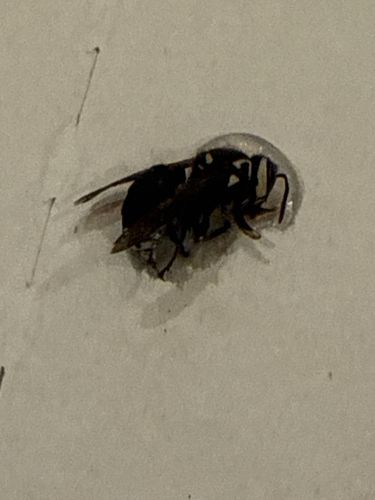Bald-faced Hornet
Scientific Name: Dolichovespula maculata
Order & Family: Hymenoptera, Vespidae
Size: Workers typically 12-15 mm (0.5-0.6 inches), queens up to 18-20 mm (0.7-0.8 inches).

Natural Habitat
Forests, urban and suburban areas, typically building aerial nests in trees, shrubs, and sometimes on buildings.
Diet & Feeding
Opportunistic predators, feeding on other insects (especially flies, crickets, and caterpillars) to feed their larvae. Adults also consume nectar, fruit juices, and sap.
Behavior Patterns
Social insects forming large colonies within papery nests. They are highly territorial and aggressive defenders of their nest, known for their painful sting. They do not lose their stinger after a single sting.
Risks & Benefits
Risks include painful stings, which can be dangerous for individuals allergic to venom. Benefits include acting as a natural pest control, preying on many garden and agricultural pests.
Identified on: 9/17/2025